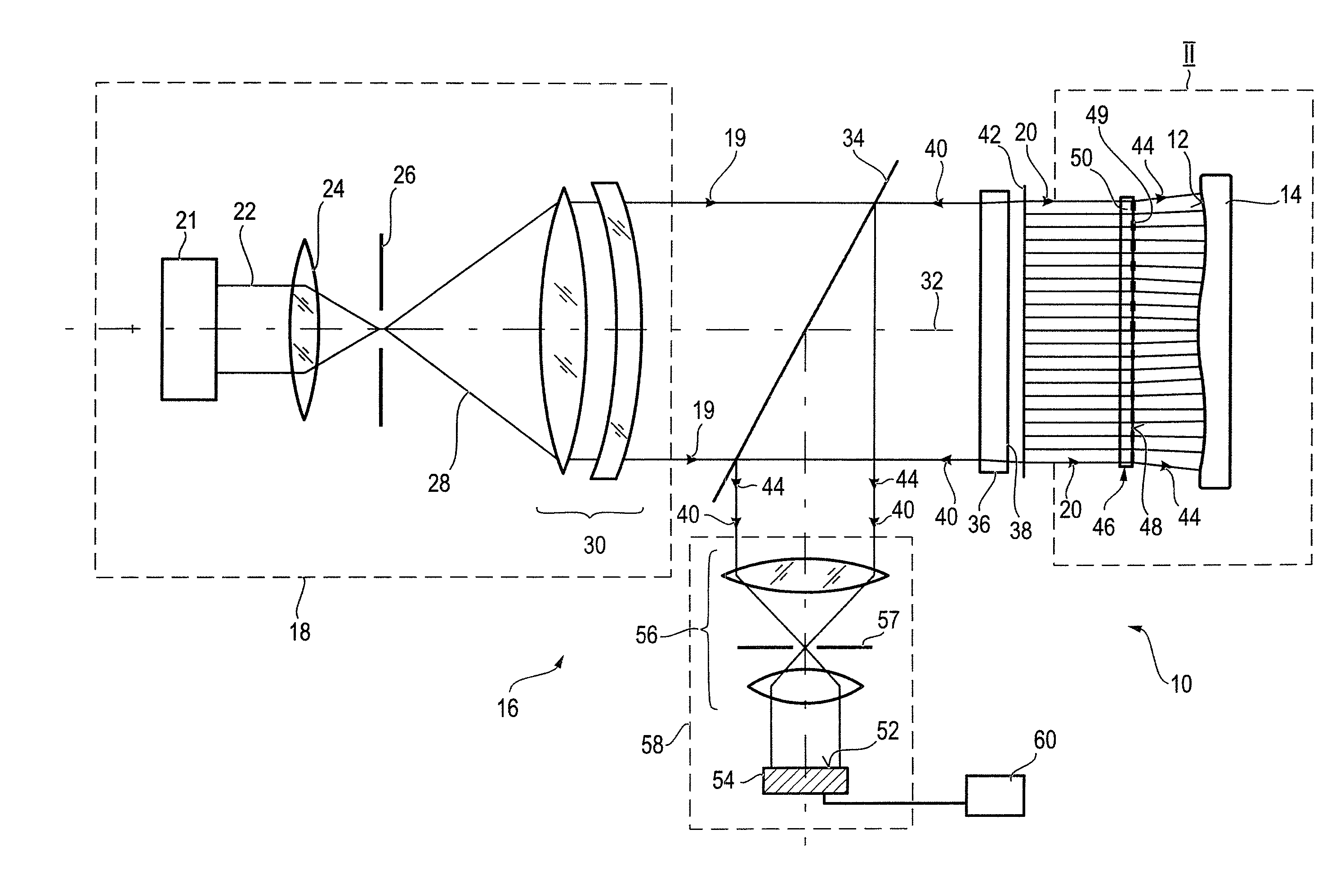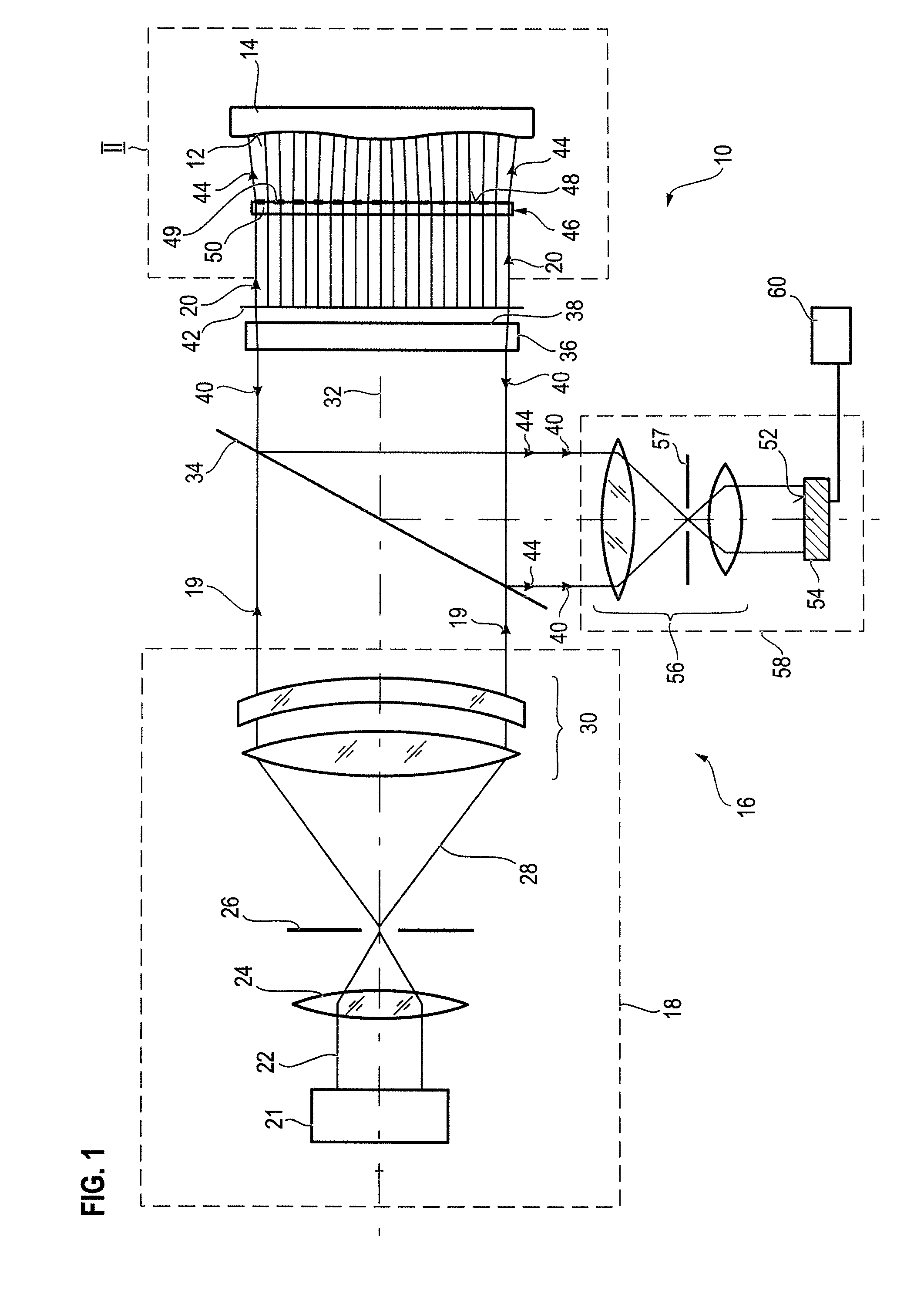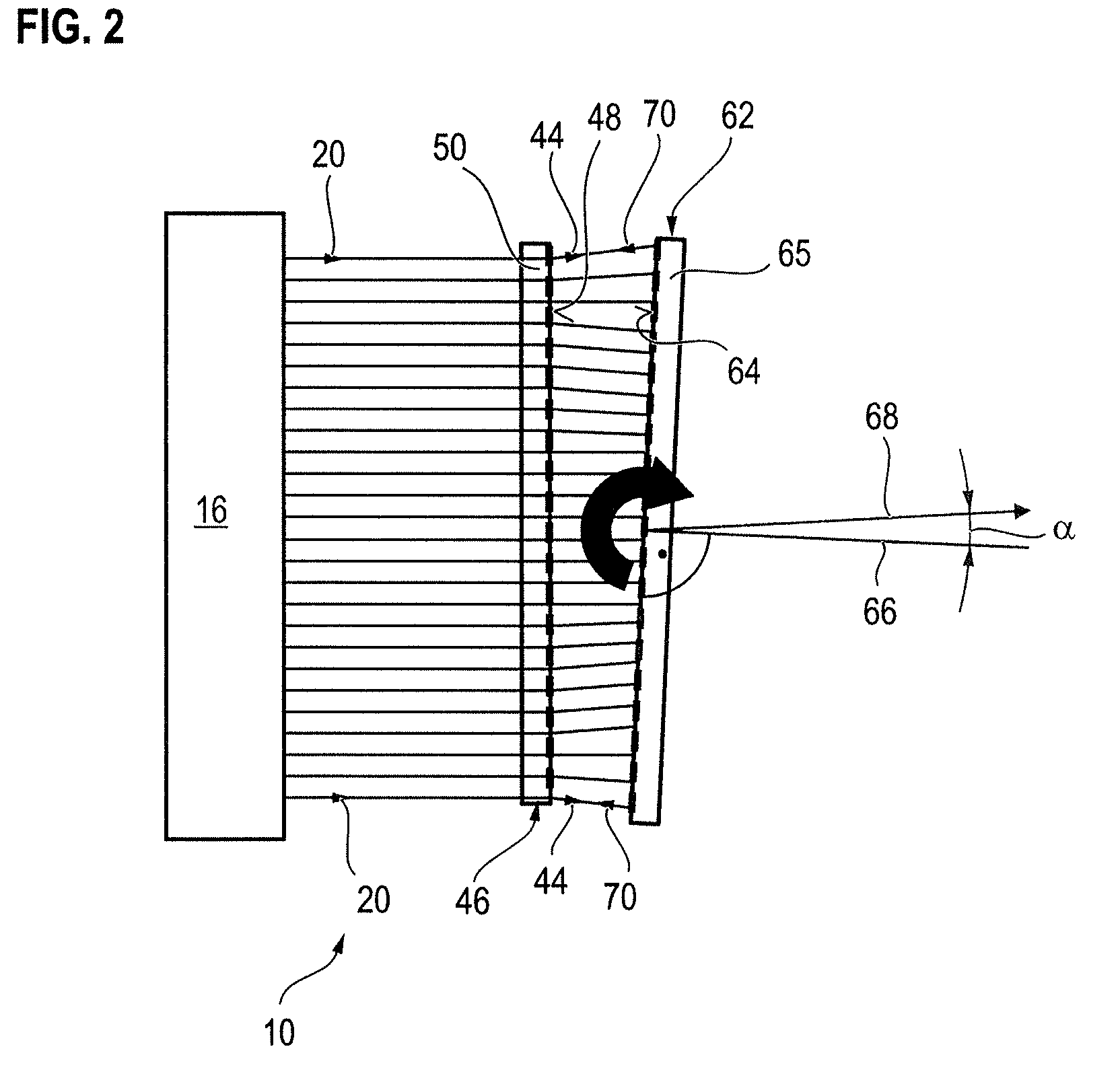Optical element and method of calibrating a measuring apparatus comprising a wave shaping structure
a technology of optical elements and measuring apparatuses, which is applied in the direction of structural/machine measurement, geometric properties/aberration measurement, instruments, etc., can solve the problems of inability to provide calibration aspheres, and the accuracy of calibration cgh is not better than the accuracy of compensation systems, so as to achieve high intensity
- Summary
- Abstract
- Description
- Claims
- Application Information
AI Technical Summary
Benefits of technology
Problems solved by technology
Method used
Image
Examples
second embodiment
[0136]FIG. 8 shows the diffractive surface 264 of the diffractive calibration device 262 shown in FIG. 6, which can be used alternatively to the diffractive surface 264 shown in FIG. 7. The diffractive surface 264 according to FIG. 8 comprises a diffractive calibration structure 263 formed by first stripes 272 and second stripes 274 arranged in alternating sequence to form a super grating 284. For this purpose the stripes 272 and 274 are configured in a curved or bent shape and have variable width. The first stripes 272 each comprise a grating structure configured to form a first phase function. The super grating 284 formed by the stripes 272 and 274 is configured to form a second phase function.
[0137]The first phase function of the first stripes 272 is formed by a combination of a spherical phase sub-function and half of a given non-spherical phase sub-function coded with half of a tilt-carrier. The second phase function of the super grating 284 comprises half of the given non-sphe...
exemplary embodiment 1000
[0186]FIG. 24 shows a first exemplary embodiment 1000 of a projection objective for a projection exposure tool operating with EUV-radiation. The projection objective 1000 according to FIG. 24 includes six rotationally-asymmetric mirrors 1310, 1320, 1330, 1340, 1350, and 1360. An optical element of the above described type according to the invention is used as at least one of these mirrors, which is manufactured, e.g. using one of the calibration methods of the invention.
[0187]The projection objective 1000 images EUV-radiation from an object plane 1103 to an image plane 1102 along a reference axis 1105. Data for the projection objective 1000 is presented Table 1A and Table 1B below. Table 1A presents optical data, while Table 1B presents rotationally-asymmetric constants for each of the mirror surfaces. For the purposes of Table 1A and Table 1B, the mirror designations correlate as follows: mirror 1 (M1) corresponds to mirror 1310; mirror 2 (M2) corresponds to mirror 1320; mirror 3 (...
PUM
| Property | Measurement | Unit |
|---|---|---|
| Length | aaaaa | aaaaa |
| Diameter | aaaaa | aaaaa |
| Length | aaaaa | aaaaa |
Abstract
Description
Claims
Application Information
 Login to View More
Login to View More - R&D
- Intellectual Property
- Life Sciences
- Materials
- Tech Scout
- Unparalleled Data Quality
- Higher Quality Content
- 60% Fewer Hallucinations
Browse by: Latest US Patents, China's latest patents, Technical Efficacy Thesaurus, Application Domain, Technology Topic, Popular Technical Reports.
© 2025 PatSnap. All rights reserved.Legal|Privacy policy|Modern Slavery Act Transparency Statement|Sitemap|About US| Contact US: help@patsnap.com



